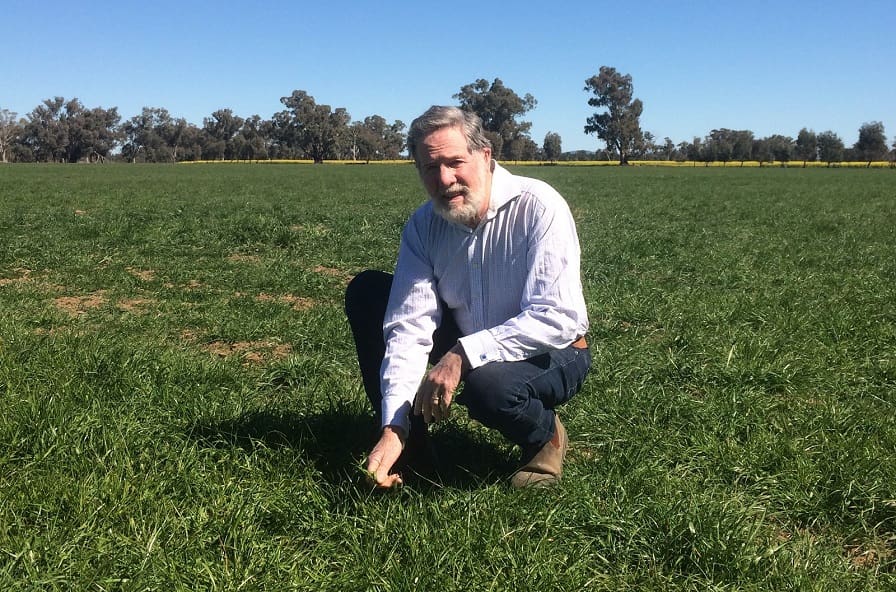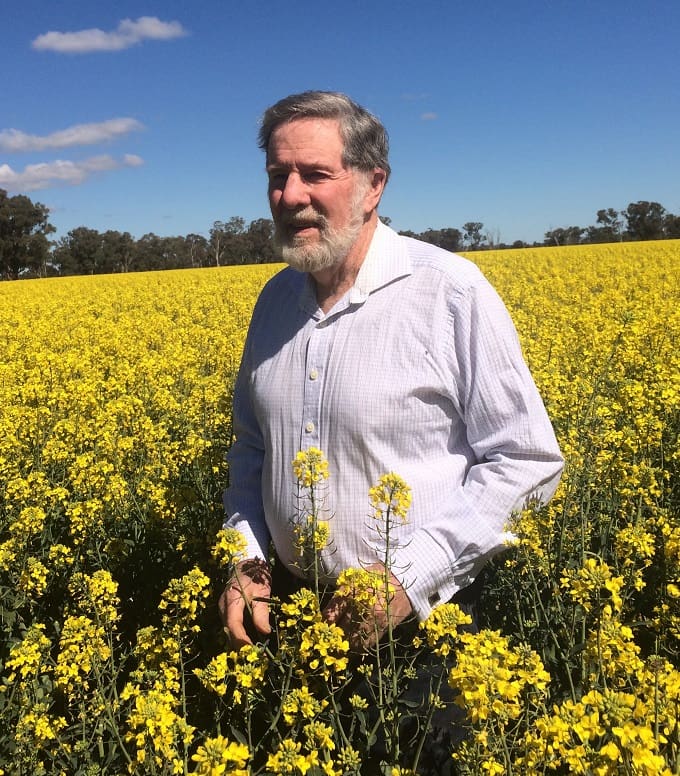SUBSURFACE acidification in the southern farming regions and “an appalling lack” of phosphorus going into the Brigalow bio-region of eastern Australia are two areas of serious neglect in Australian agriculture that urgently need addressing.
That’s the plea of distinguished CSIRO research scientist, John Angus, who was awarded this year’s C.M. Donald Medal and presented the Donald Oration at the 19th Australian Agronomy Conference in Wagga Wagga, southern New South Wales, last week.
Dr Angus believes deepening subsurface acidification and low Brigalow phosphorus are two of the most pressing issues in Australian farming that need to become the focus of substantial research efforts.
He said subsurface acidification was a significant and growing problem in the southern farming areas from the south east to the south west of the continent.
“There has been a lot of lime go on. There has probably been enough lime to neutralise about half the acidification, but there is a huge backlog of 30 to 40 years of acidification,” he said.
“We need to somehow find ways to economically neutralise the acidity in the subsurface below 20 centimetres. The acidification is moving down a few millimetres a year. The lime is not chasing it down.”
Similarly, Dr Angus said there was not enough attention being paid to the low levels of phosphorus (for pastures) in the Brigalow bio-region.
“There are about 40 million hectares of soils in the Brigalow bio-region that have low phosphorus and there is very little phosphorus fertiliser going on there. There are real opportunities to do something about it,” he said.
“But neither the subsurface acidification issue (in southern farming areas) nor the phosphorus catastrophe in the Brigalow bio-region have any priority with the R&D corporations. I think there needs to be a real rethink and review of how these priorities are assessed.
“When meat prices are as high as they are we should be producing more meat, not spending levy funds to promote demand when the prices are already prohibitive to consumers.”
Nitrogen focus
Delivering the Donald Oration, Dr Angus reflected on his long career in farming research, largely through the CSIRO where much of his focus has been on the role of nitrogen in Australian farming systems.
In the 1960s after completing an agriculture degree at the University of Melbourne and going on to do a PhD on photosynthesis, he worked at CSIRO Land Division for 10-15 years.
“In the early 1970s I started modelling nitrogen in crops. We found you had to use the minimum of nitrogen supply and nitrogen demand to understand how nitrogen behaved in the field,” he said.
“There was a set of mistakes made in the late ’60s and early ’70s on nutrition, starting with the national soil fertility program which showed no profitable response of crops to applied nitrogen. That was different to the rest of the world where nitrogen was becoming widely adopted. It wasn’t happening in Australia.”
So, in the late 1980s when he moved to what was then CSIRO Plant Industries, he joined with colleagues to start a large experimental program looking into nitrogen response.
“We found you could find nitrogen response, provided there had been a break crop growing beforehand. At that stage breeders had produced well-adapted canola varieties,” he said.
“We were able to show that you could get a nitrogen response, provided two things were in place: a break crop for wheat and the number of shoots per square metre was less than about 500.
“That turned out to be the best prognosis of nitrogen response. The low shoot density was important because it was a proxy for the mass of nitrogen in the plant.”
Dr Angus said the results prompted the rapid adoption of nitrogen fertiliser in the mid-1990s, albeit after a slow start.
“There had been a lag in the uptake just before that, partly because there was a lack of spreading machinery and also because it coincided with the premium for protein whereby if you got a hard finish to the season you got very little yield response but you did get a protein response,” he said.
“The use of nitrogen fertiliser went up rapidly in the 1990s, fell in the Millennium drought, and has roared back in the last six years.”
Dr Angus said the sudden uptake of nitrogen in the mid-1990s in south eastern Australia first, then in Western Australia, tracked very closely with the expanding area of canola and on the amount of lime used.
“Growers had to use lime to grow canola. That established a virtuous circle because the limed soil was then able to support lucerne and barley which had drifted out of the system on the acid-type soils. It was a spiral of factors that happened one after the other,” he said.
“The canola and lime usage both took off in the mid-1990s, decreased during the Millennium drought, and both have increased again since then. That shows us that when people are making money out of lime they will apply it because they get the return from the canola and the wheat after the canola.”
Ongoing research
Dr Angus said ongoing work with nitrogen had led to new discoveries and opened up further issues that needed addressing through research.

Dr Angus says grazing removes a lot of nitrogen from the crop, but simply just replacing it with fertiliser doesn’t work.
“One was that there was very low nitrogen efficiency when cereals were grazed. Grazing removes a lot of nitrogen from the crop. But just replacing it with fertiliser doesn’t work because there are too few resources in the crop to take it up fast enough. We are working on that and should have an answer in a year or two on how to fix it,” he said.
“Another thing is that banding has come in. We did some work in the late ’90s on banding but it went nowhere because of the Millennium drought. But there are four groups around the country working on banding now.
“It’s a one-pass mid-row banding where you apply urea or anhydrous ammonia between the rows so it is far enough away from the plants so it doesn’t cause toxicity. It’s a form of slow release. It also probably means the nitrogen is separated in space from the immobilisers – the bugs that turn the mineral nitrogen into organic form. I estimate there is about 40 kilograms/hectare of nitrogen going down this pathway from the mineral form back to the organic form.
“We think the next big thing in nitrogen will be reducing the amount of immobilisation.”
Dr Angus is CSIRO Agriculture and Food research fellow, Adjunct Professor at Charles Sturt University and a mixed farmer at Stockinbingal in southern NSW.
Grain Central: Get our free daily cropping news straight to your inbox – Click here




HAVE YOUR SAY